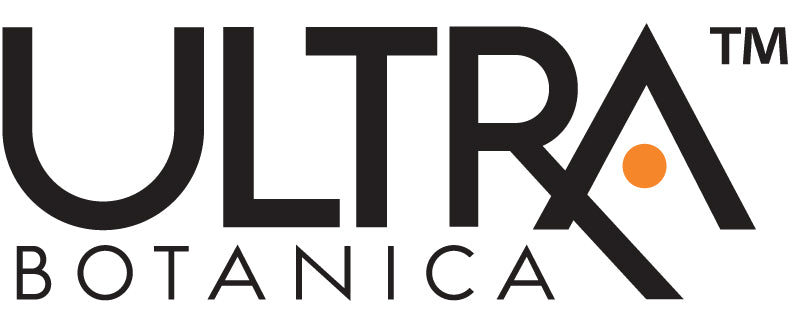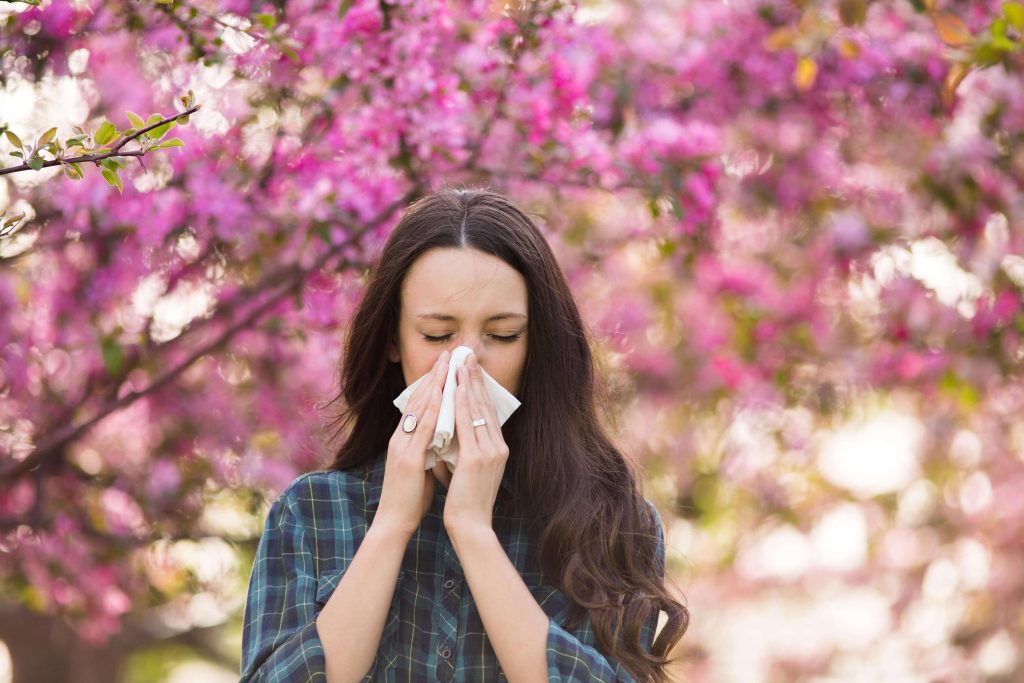Spring is approaching—does that mean you’re bracing for sniffles, itchy eyes, and nonstop sneezing? Often, you don’t even realize you’ve been exposed until the symptoms hit. But what if there was a natural solution to help provide relief, like quercetin for allergies?
Many people seek alternatives to conventional antihistamines. Could a plant-derived compound such as Quercetin for allergies provide real relief?
Here’s a peek into a holistic approach for managing seasonal woes as well as year-round allergic triggers.
What is an Allergy?
An allergy is when the immune system overreacts to a typically harmless substance, known as an allergen. In people with allergies, the immune system mistakenly identifies the allergen as a threat and triggers a defensive immune response.
While it may seem like allergies result from a weak immune system, they actually indicate an overactive one. True immune health relies on balance, ensuring the body responds appropriately without overreacting to harmless substances.

Types of Allergic Diseases
Allergies manifest in different ways. Environmental factors frequently play a large role. Here are some of the most common types of allergic diseases:
- Seasonal Allergies: Also known as hay fever or allergic rhinitis, these typically occur in spring, summer, or fall. Trees, grasses, ragweed, and other plants can trigger these seasonal allergies with significant regularity.
- Food Allergies: Can cause reactions from mild hives to life-threatening anaphylaxis. Common triggers include peanuts, tree nuts, milk, eggs, soy, wheat, fish, and shellfish.
- Skin Allergies: Contact dermatitis is a common skin allergy. It could cause skin inflammation from certain substances, from poison ivy to skin care products and more.
- Animal Allergies: Some people are highly allergic to animals such as cats, dogs, and horses.
- Drug Allergies: Reactions to certain medications such as sulfa drugs, antibiotics, and NSAIDS can range from mild rashes to serious systemic effects.
- Insect Sting Allergies: Bees, wasps, hornets, yellow jackets, and fire ants are common triggers of insect sting allergies.
Allergy symptoms can include a variety of symptoms depending on the trigger — sneezing, itchy eyes, allergic rhinitis, atopic dermatitis, rash, breathing difficulties, and even serious potentially fatal systemic reactions called anaphylaxis.
Allergies are widespread across the globe, and their prevalence has risen significantly over the past 30 years.
Environmental changes may play a key role in this increase, as shifts in exposure to sensitizers—such as outdoor and indoor allergens, air pollution, and infections—contribute to the growing rates of allergic diseases.
How the Immune System Reacts to Allergens
When the body detects an allergen for the second time, it triggers a large release of allergy-related chemicals, a process known as secretion.
Here’s how the immune system reacts when someone encounters an allergen:
- First Encounter: The immune system incorrectly identifies the allergen as harmful. It starts making Immunoglobulin E (IgE) antibodies specific to that allergen. These IgE antibodies then bind to mast cells, which are in tissues throughout the body. This first encounter doesn’t produce any noticeable allergy symptoms.
- Subsequent Encounters: The IgE antibodies on the mast cells “capture” the allergen. This causes the mast cells to release various chemical mediators, such as histamine, leukotrienes, and prostaglandins, which cause allergy symptoms such as inflammation, itching, and swelling.

Histamine and Mast Cells
Histamine plays a major role in allergic reactions. The effects of histamine can manifest in many different parts of the body. Histamine induces reactions in the eyes, nose, throat, lungs, skin, or gastrointestinal tract.
Histamines are the culprit behind the sneezing, itchy eyes, etc. when the body reacts to an allergen.
Mast cells are a major source of histamine release and a main cell type involved in allergic responses. Stabilizing mast cells can therefore help reduce the intensity of the reaction.
Other Over-Reactions by the Immune System
Besides histamine release, the immune response can overreact in several other ways:
- Cytokine Production: Pro-inflammatory cytokines act as signaling molecules that coordinate immune responses, influencing inflammation and the severity and duration of allergic reactions.
- Eosinophil Recruitment: Eosinophils, a type of white blood cell, play a key role in chronic allergic reactions, releasing toxic granules that can worsen symptoms.
Managing these immune over-reactions often requires a combination of pharmaceutical treatments and natural approaches tailored to the individual’s needs.
How to Reduce Allergen Exposure
Spring is a beautiful time of year, but for allergy sufferers, it can also mean sneezing, congestion, and itchy eyes due to high pollen levels.
To minimize exposure, start by keeping track of the daily pollen count using weather apps or allergy forecast websites. On high-pollen days, try to stay indoors, especially in the morning when pollen levels tend to peak.
When outside, wear sunglasses to protect your eyes, and consider a mask if pollen levels are extremely high. Once you get home, change your clothes and take a shower to wash off pollen that’s settled on your skin and hair.
Reducing indoor pollen exposure is just as important. Keep windows and doors closed, especially on windy days, and use an air purifier with a HEPA filter to trap pollen and other allergens.
Regularly clean and vacuum your home with a HEPA-equipped vacuum cleaner and wash your bedding frequently to remove pollen that may have settled.
If you have pets that go outdoors, wipe them down before they come inside to prevent them from bringing pollen into your home. By taking these proactive steps, you can enjoy the beauty of spring while keeping allergy symptoms under reasonable control.

Quercetin for Allergies: Natural Allergy Relief
Natural approaches to allergy relief have gained popularity in recent years. Quercetin has been heavily researched for its potential benefits in allergy relief over the past decade or so.
Quercetin may interact with medications such as warfarin, aspirin, and Plavix. It is important to talk to your doctor before taking a new supplement such as Quercetin.
What is Quercetin?
Quercetin is a flavonoid, a type of plant pigment responsible for the vibrant colors in many fruits, vegetables, and flowers.
As a powerful antioxidant, quercetin helps protect the body from harmful free radicals—unstable molecules that can cause damage to cells and contribute to various health issues. These free radicals are found everywhere in our environment.
Quercetin as a Flavonol
Quercetin belongs to the flavonol subgroup of flavonoids, which are characterized by a unique chemical structure, featuring a 3-hydroxyflavone backbone. This structure sets flavonols apart from other flavonoids such as flavones, isoflavones, and anthocyanins.
Flavonols are commonly found in foods like apples and various berries. In fact, quercetin makes up 60% to 75% of the average person’s flavonol intake.
Quercetin as a Polyphenol
Quercetin is also classified as a polyphenol, a group of compounds that contribute to the vibrant colors found in many plants.
The phenol groups within quercetin provide it with powerful antioxidant properties, helping to neutralize free radicals and combat damage caused by reactive oxygen species.
Quercetin and Mast Cell Stability
One of quercetin’s most significant properties is its ability to stabilize mast cells. By stabilizing mast cells, quercetin can decrease the release of allergy mediators. Fewer mediators mean milder allergic reactions.

Quercetin Inhibits Histamine Release
Quercetin has demonstrated the ability to inhibit histamine release from mast cells.
This helps reduce the unpleasant effects linked to high histamine levels in the body… such as those sneezing attacks and itchy eyes in response to trees, ragweed, cats, and more.
Does Quercetin Decrease Cytokines?
Research indicates that Quercetin can decrease pro-inflammatory cytokines. This reduction in secretion includes molecules such as TNF-α, IL-6, and IL-8. Thus, this potent antioxidant can support healthy responses.
How Quercetin Suppresses Interleukin IL-4
Quercetin can significantly reduce the production of interleukin IL-4, a key factor in allergic reactions. By inhibiting IL-4, quercetin helps maintain a healthy immune balance, which can alleviate troublesome allergy symptoms.
This balance is particularly beneficial for people dealing with conditions that may be exacerbated by excessive IL-4 secretion.
Lowering IL-4 levels may help reduce the misery for those who are prone to high histamine production, further supporting their overall health and immune function.
Does Quercetin Reduce IgE Antibodies?
A noteworthy (randomized, placebo controlled) study yielded surprising findings about IgE. Scientists examined 66 participants aged 22 to 78 with allergic symptoms.
Participants got either 200 mg of quercetin daily, or a placebo, for 4 weeks. Symptoms were evaluated both before and after supplementation.
They discovered that taking oral quercetin supplements reduced certain allergy issues such as eye itching, sneezing, allergic rhinitis, nasal discharge, and sleep disturbances.
It showed significant improvements in symptoms and quality of life. The study showed no negative adverse effects.

Quercetin for Allergies: Eosinophils
Quercetin seems to regulate eosinophil activity by inhibiting their activation and reducing the production of chemokines that attract these cells.
This modulation may offer therapeutic benefits for conditions marked by heightened eosinophil activity, such as allergies and allergic asthma.
Foods High in Quercetin
Below is an overview of various fruits, vegetables, and other dietary sources that are known for their high quercetin content. These foods are particularly rich in this beneficial compound, making them excellent choices for boosting quercetin intake.
Fruits:
- Apple skins
- Red raspberry
- Blueberry
- Cranberry
- Black currants
- Black chokeberry
- Bog whortleberry
- Cornelian cherry
Vegetables:
- Red onion and especially onion skins
- Shallots
- Broccoli
- Capers
- Red leaf lettuce
Herbs:
- Dill
- Fennel
- Oregano
Quercetin levels can vary due to factors such as cultivation methods, season, and other variables. Taking a quercetin supplement such as UltraQuercetin (name is changing to UltraAllergy) can help, as it offers a more standardized amount.

Supplementing with Quercetin
It can make a great deal of sense to supplement with quercetin for allergies, especially during the spring allergy season (or whatever season tends to trigger your allergic asthma or itchy eyes and sneezing).
The supplement, UltraQüercetin™ was formulated exactly for that purpose. The quercetin found in UltraQüercetin™ (with its new name, UltraAllergy) can help support your immune cells in special ways, whatever the season.
Specifically, quercetin helps manage IgE antibody production and antigen-specific IgE. Beyond allergy relief, research suggests quercetin may promote overall vitality and support heart health, including potential support for healthy blood pressure levels.
Conclusion
Allergies may seem like a “demon” in springtime, but they shouldn’t dominate our lives.
Gaining a deeper understanding of how your immune system works and how it responds to allergens provides valuable insight into how to better manage symptoms.
Including compounds like quercetin in your routine can foster a more balanced relationship with your environment. Quercetin for allergies may play a pivotal role in effectively addressing allergy symptoms while also supporting overall health.
Additionally, research indicates that quercetin may offer broader health benefits, including promoting vitality and supporting heart health, with potential benefits for maintaining healthy blood pressure levels.
As ongoing research uncovers more about the role of dietary polyphenols and quercetin glycosides, we are likely to discover even more ways this powerful compound can support our immune system and improve overall well-being.

Frequently Asked Questions
Quercetin for allergies — does it really work?
Yes, quercetin has been heavily studied for its potential role in alleviating allergy symptoms.
As a powerful antioxidant compound, quercetin helps stabilize mast cells, preventing the release of histamine and other allergy-provoking chemicals.
Research suggests that quercetin may be effective in reducing symptoms like sneezing, itchy eyes, and nasal congestion.
By inhibiting the production of interleukin IL-4 and reducing IgE antibody levels, quercetin can help manage allergic reactions and provide relief from seasonal allergies.
What foods contain the most quercetin?
Many fruits, vegetables, and herbs are rich in quercetin. Some of the best dietary sources of quercetin include apples (especially the skins), red onions, broccoli, and berries like blueberries, cranberries, and black currants.
Other foods such as shallots, capers, and herbs like dill, fennel, and oregano also contain significant amounts of quercetin. Eating these foods can naturally boost your quercetin intake and may help reduce allergy symptoms. A quercetin supplement can boost your levels above what you get from food alone.
What supplements help with allergies?
Several supplements may help manage allergy symptoms effectively, and one of the most well-researched is quercetin for allergies.
Known for its ability to stabilize mast cells, quercetin helps reduce histamine release, which is a key player in allergy symptoms such as sneezing and itchy eyes. It also supports the immune system by maintaining a healthy immune balance.
One supplement specifically designed to support immune health during allergy season is UltraQüercetin™ (now called UltraAllergy) from UltraBotanica. This supplement is formulated to provide targeted support for seasonal allergies by leveraging the benefits of quercetin.





Share:
Exploring Curcumin Longevity Benefits for Healthy Aging
Ultra Processed Foods Risks: A Comprehensive Health Guide